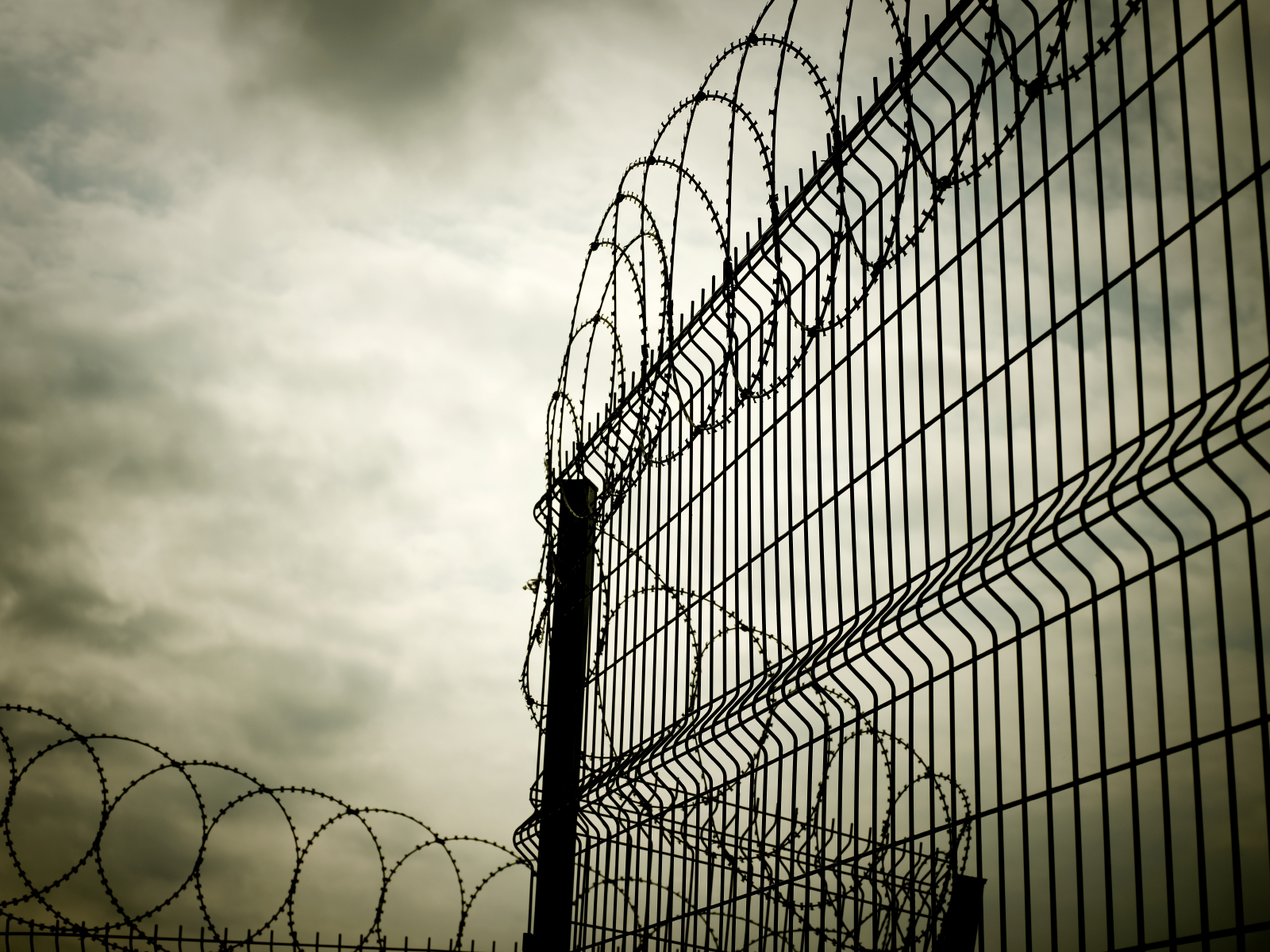SolarCity is probably the best-known name in the U.S. for residential solar installations — it’s top in the market. The company was founded by Elon Musk, along with two of his cousins, and has set the popular standard for cleantech. But SolarCity has one thing it doesn’t want to be known for: For a huge solar-panel project launched in 2012 at two university campuses in Oregon, it relied on a vendor that used cheap prison labor to produce the panels, under a “buy American/buy local” banner. The story is a good reminder that we need to watch the renewables industry closely to make sure it doesn’t throw human rights and labor ethics out the window in its push toward a clean energy economy.
Here’s how the SolarCity prison saga came about. Oregon State University and the Oregon Institute of Technology teamed up a few years ago to install solar panels on their campuses, in what would become one of the largest solar installations in the state. Since the vendor, ultimately SolarCity, would own and maintain the panels, the two schools wouldn’t need to spend a penny on the project.
For SolarCity, the contract also looked like a win. Under a lucrative state program, the Oregon Department of Energy doled out $11.8 million in tax credits for the $27 million project. (SolarCity would not confirm the amount of the tax breaks despite repeated requests.) Those generous tax incentives — part of the Business Energy Tax Credit program, which ended in 2014 — came with an imperative for “job creation and retention requirements.”
For its part, SolarCity did install panels that were produced by Oregon workers. But those workers were behind bars at Sheridan Federal Prison — and instead of benefiting from a program that was supposed to pump up the regional economy, they were paid less than a dollar an hour for their labor.
The Oregon schools’ bid for a big solar array program that would create jobs while reducing emissions didn’t actually start with SolarCity. As outlined by The Oregonian, the first developer backed out over concerns that the tax credits wouldn’t come through, and the second developer, the Renewable Energy Development Corp., known as REDCO, went bankrupt. The universities then turned to SolarCity, which would engineer the project and install panels manufactured by another company, SolarWorld. That’s how things played out for the first two of the five phases of the project, with SolarWorld building the panels at its factory in Hillsboro, Ore., where it paid workers more than minimum wage.
But then SolarCity maneuvered to bump SolarWorld out of the deal. (The two companies had a contentious relationship: They were on opposite sides of a trade dispute over alleged dumping of Chinese solar panels.) SolarCity says it was afraid that SolarWorld was on the verge of bankruptcy, so it started looking for other regional panel providers. It soon found Suniva — a company that’s based in Georgia, but produces solar modules in Sheridan prison in Oregon. SolarCity used Suniva’s prison-produced panels in the project’s last three phases.
SolarCity spokesperson Jonathan Bass says that for the Oregon university project, “we wanted it to be manufactured in the U.S., and we wanted it to be manufactured in Oregon.” He maintains that Suniva was the only option. First he told Grist that this was the only time SolarCity has used prison-produced panels; later he added by email that Suniva has produced less than 1 percent of all solar modules installed by SolarCity. But in June, Bass sounded more enthusiastic about Suniva’s use of prison labor when he told Reuters that “the mission to provide job training to prepare inmates for successful re-entry to the workforce is admirable.”
SolarWorld did not, in fact, go bankrupt — though it had to lay off workers at its Oregon plant after SolarCity ousted it from from the university deal. SolarWorld continues to operate that plant, the biggest such facility in North America.
How did Suniva, SolarCity’s Oregon supplier, end up hiring prison workers to make solar panels? The firm operates under a program with a government-owned corporation called Federal Prison Industries, commonly called Unicor. Details of the relationship are murky: Suniva never responded to queries for this story, and Unicor declined to provide copies of any contracts between the two, citing confidentiality provisions. But in an email to Grist, Unicor’s Marianne Cantwell did explain that the agreement between Unicor and Suniva for prisoner labor to manufacture solar panels in Oregon “provides inmates with meaningful training and job skills.”
Although Unicor prides itself on its work programs, not all of them are created equal. The U.S. Department of Justice has a Prison Industry Enhancement Certification Program, or PIE, that sets high standards for prison workers — including paying a prevailing wage. While Unicor has two PIE programs in place for manufacturing other goods, the Sheridan plant, where 220 prisoners produced panels for SolarCity’s big project, has not been certified. That’s part of the reason why the workers were only paid 93 cents an hour there.
In the best-case scenario, prison labor programs are accompanied by reentry programs that help connect inmates to jobs upon release from prison. But that’s not usually how it plays out. “Very rarely are inmate workers provided job opportunities for the same businesses once they’re released,” says Alex Friedman, managing editor of Prison Legal News. That’s because the companies that employ prisoners do so precisely because it’s so cheap — it would hurt the bottom line to pay a fair wage once the prisoner is released and becomes a regular worker.
Friedman emphasizes that he doesn’t think prison labor is inherently a bad thing: a prevailing wage, the right to unionize, and work safety standards can create jobs in prison that translate to jobs outside. But that isn’t the situation at Suniva’s facility at the Sheridan prison. And SolarCity’s Bass says his company isn’t participating in any prison reentry program. Workers at Sheridan prison who manufactured the solar panels that were installed at Oregon State have no expectation that they’ll be hired at a new panel manufacturing plant that SolarCity is building in Buffalo, N.Y.
SolarCity’s Bass says that, while the company knew Suniva was using prison workers, it didn’t know the wage was so low. He says that using panels made with cheap prison labor isn’t in line with the company’s commitment to sustainability. But SolarCity refused to confirm whether or not it will use panels made by cheap prison labor in the future.
In an email, Bass explains that subcontractors who worked on other parts of the Oregon university project were paid between $27 and $70 per hour, which is considerably more than Oregon’s minimum wage of $8.80 and $9.15 an hour for 2012 through 2014. But Sheridan’s prisoners saw only a tiny fraction of that.
The shift toward clean energy promises to boost the economy while providing us with cleaner sources of electricity. But there’s nothing clean or sustainable about SolarCity’s recent venture, which exploited prison labor and earned handsome taxpayer subsidies on a project that was supposed to create good, green jobs in Oregon. The workers who are literally producing infrastructure that will help get us to a cleaner future must be able to enjoy a minimum standard of labor protections. This should be especially true when it comes to making products for SolarCity, a posterchild for cleantech.
—–
Correction, 29 Oct 2015: The headline on this story originally said that SolarCity used prison labor. In fact, as explained in the story, SolarCity did not directly employ prison labor; rather, it used panels made by another company, Suniva, that employed prison labor. Also, Suniva was a vendor for the project, not a contractor, as originally stated in the first paragraph of the story.



